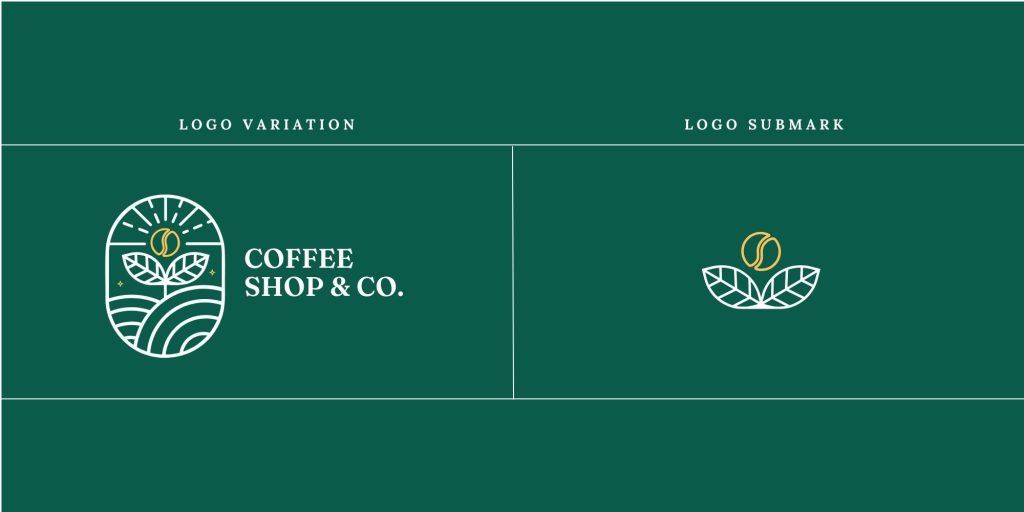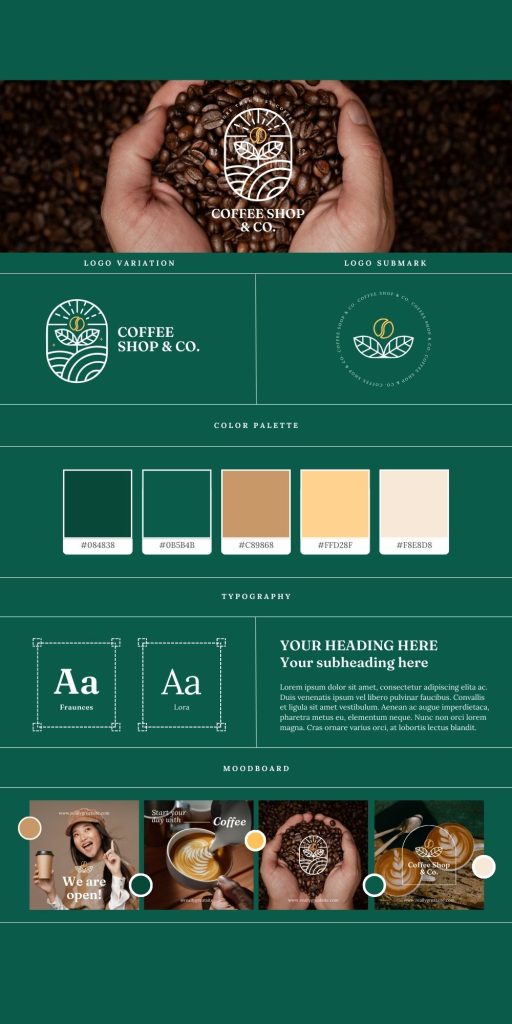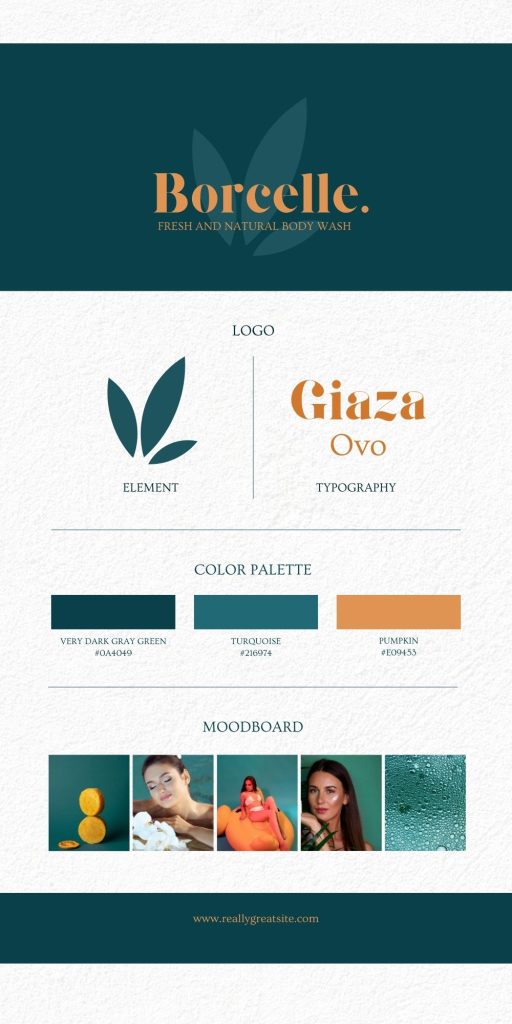Table of Contents
The Guide to the Best Logo Design: Techniques and Strategies

Best Logo Design
Welcome to “The Ultimate Logo Design Handbook: Step-by-Step Techniques and Strategies for Creating the Perfect Logo”. Whether you're an experienced graphic designer or a small business owner looking to create a professional brand identity, this comprehensive guide has you covered. With over X years of industry expertise, we're excited to take you through the essentials of logo design that will really make your brand stand out.
In this manual, we'll walk you through the step-by-step process of creating the perfect one logo, from initial brainstorming to final execution. Discover how to unlock your creativity, choose the right color palette and choose the most suitable typography to reflect your brand personality.
In addition, we will explore the principles of effective logo design and discuss the different types of logos, ensuring that you are equipped with the knowledge to make informed design decisions. With our insider tips and techniques, you'll take your logo design skills to a whole new level.
Importance of a well designed logo
The logo it is the visual representation of a brand. It acts as a powerful tool to create a memorable and recognizable identity. A well designed one logo it can convey the essence of a brand's values, personality and purpose in a single image. It is often the first point of contact between a brand and its target audience, making it vital to create a logo that leaves a lasting impression.
A professionally designed logo it can help establish credibility and build trust with customers. It sets the tone for the brand and conveys professionalism and attention to detail. A powerfull logo becomes an integral part of a brand's marketing strategy as it can be used across various platforms and media to create a consistent and coherent identity brand name.
A well-designed logo also has the potential to differentiate a brand from its competitors. In a crowded market, a unique and visually appealing logo can attract attention and make a brand stand out. It becomes a symbol that represents the values of the brand and sets it apart from others in the industry.
Creating a logo can seem like a daunting task, but with the right techniques and strategies, anyone can design a logo that effectively represents their brand. In the following sections, we'll explore the essentials of successful logo design and guide you through the step-by-step process of creating a logo that captures the essence of your brand.
Elements of a successful logo
A successful one logo it is the result of careful consideration of various elements that work together to create a cohesive and visually appealing design. Understanding these elements and their impact on the overall design is crucial to creating a logo that effectively represents your brand. Let's explore these elements in more detail.
Simplicity: Simplicity is key when it comes to logo design. A simple logo is more memorable, flexible and easier to recognize. It should be easy to understand at a glance and not overly complicated. By focusing on the essential elements of your brand and eliminating unnecessary details, you can create a logo that is clean and eye-catching.
Relevance: A successful one logo it must be relevant to the brand it represents. It should reflect the values, personality and target audience of the brand. Think about the industry your brand operates in and incorporate elements that make sense and resonate with your target market. A relevant logo will help you create a strong connection between your brand and its audience.
Memorization: A memorable logo is one that sticks in people's minds. It should be distinctive and easily recognizable. A logo that is unique and stands out from the competition will leave a lasting impression on customers. Consider using bold colors, unique shapes, or clever symbols to make your logo memorable.
Flexibility: A flexible logo is one that can easily be adapted to different media and sizes without losing its impact. It should work just as well on a small one business card as in a large billboard. When designing your logo, be sure to consider its scalability and test it on different platforms to ensure it remains legible and visually appealing.
Timelessness: While trends come and go, a successful logo is timeless. It should stand the test of time and stay current even as design styles evolve. Avoid using elements that are too trendy or trendy, as they can quickly become outdated. Instead, focus on creating a logo that will remain relevant and effective for years to come.
By considering these elements and incorporating them into your logo design, you can create a visually appealing and effective logo that accurately represents your brand. In the next section, we'll explore the importance of researching and understanding your target audience before diving into the design process.
Research and understand your target audience
Before starting the logo design process, it is essential to conduct thorough research and gain a deep understanding of your target audience. Understanding who your brand is targeting will inform the design decisions you make and ensure your logo resonates with the right people.
Start by identifying your target market and researching their preferences, demographics and psychographics. Consider factors such as age, gender, location, interests and values. This information will help you create one logo that will appeal to your target audience and effectively communicate your brand message.
Next, analyze your competitors and their logos. Look for trends, commonalities, or unique approaches that have been successful in your industry. This will help you differentiate your brand and avoid creating a logo that is too similar to existing brands.
Once you've gathered this information, create a mood board or visual collage that reflects the characteristics and qualities you want your logo to convey. This will serve as a source of inspiration and visual reference throughout the design process.
By thoroughly researching and understanding your target audience, you'll be able to design a logo that resonates with the right people and effectively communicates your brand values. In the next section, we'll explore the process of brainstorming and sketching logo ideas.
Logo sketch and brainstorming
Brainstorming and sketching are key steps in the logo design process. This is where you let your creativity flow and explore different ideas and concepts. By sketching out your ideas, you can quickly visualize them and determine which ones have the most potential.
Start by creating a list of keywords and concepts that represent your brand's values and personality. Use these keywords as a starting point for your brainstorming session. Write down any ideas that come to mind, no matter how simple or complex they may be.
Once you have a list of ideas, start sketching them out on paper. Don't worry about creating a perfect design – the goal is to capture the essence of your ideas and explore different variations. Experiment with different shapes, layouts and styles to see what works best.
As you design, pay attention to the overall composition and balance of your designs. Think about how the elements interact with each other and how they convey your brand message. Keep the principles of simplicity, relevance, memorability, flexibility, and timelessness in mind as you refine your sketches.
After you've sketched out several ideas, review them and narrow your choices down to a few strong contenders. Ask for feedback from colleagues, friends or your target audience to get different perspectives. This will help you identify the most promising ideas and make informed decisions as you go.
In the next section, we'll explore the importance of choosing the right combination of colors and typography for your logo.
Choosing the right color scheme and typography
The colour and typography they play important role in logo design. They evoke emotion, convey meaning and contribute to the overall aesthetic of a logo. Choosing the right combination of colors and typography is crucial to creating a logo that effectively communicates your brand personality and resonates with your target audience.
When choosing a color scheme, consider the emotions and associations that different colors evoke. For example, blue is often associated with trust and reliability, while red conveys energy and passion. Choose colors that align with your brand values and the message you want to convey.
Additionally, consider the psychology of color and how different colors can affect perception. Warm colors like orange and yellow can create a sense of excitement, while cool colors like green and blue can evoke calm and trust. Experiment with different color combinations to find what best represents your brand.
Typography is another vital element of logo design. It helps convey your brand's personality and tone. Choose fonts that are easy to read, appropriate for your industry, and aligned with your brand values. Consider whether you want a font that is modern and sleek or traditional and elegant.
Experiment with different pairs of fonts to find the right combination that balances readability and aesthetics. Avoid using too many fonts in your logo as it can create visual clutter and make it difficult to read. Keep it simple and choose fonts that complement each other.
By carefully choosing the right color combination and typography, you can improve the overall impact and effectiveness of your logo. In the next section, we'll explore how to create a digital logo using design software.
Create a digital logo using design software
Once you have completed his idea logo and make decisions about color and typography, it's time to bring your design to life using design software. Design software provides the tools and flexibility needed to create a high-quality digital logo that can be used across multiple platforms and media.
Start by choosing a design software that best suits your needs and skill level. There are many options available, from beginner-friendly software to professional-grade tools. Some popular design software include Adobe Illustrator, CorelDRAW, and Sketch.
Import your hand-drawn sketches into the design software and use them as a reference as you recreate your logo digitally. Start by creating the basic shapes and elements of your logo using vector tools. Vectors allow you to maintain the scalability and quality of your design, ensuring it remains sharp and clean at any size.
Then apply your chosen color scheme to your logo and experiment with different variations. Use the software's features to adjust the size, position and spacing of your elements until you achieve the desired balance and composition.
Once you're happy with your digital logo, save it in various file formats to ensure compatibility across different platforms and media. Common file formats for logos include JPEG, PNG, and SVG. Consider creating both color and monochrome versions of your logo to accommodate different usage scenarios.
In the next section, we'll explore the process of implementing your logo across different platforms and media.
Implementation of your logo on different platforms and media
Creating a logo is just the first step. Its implementation across different platforms and media is equally important. Consistency is key when it comes to brand identity, and making sure your logo looks great across different apps will boost your brand recognition and impact.
Start by creating style guides or a brand identity manual that describes how your logo should be used across different platforms. This document should include specifications for size, spacing, color variations, and any other guidelines that maintain the integrity of your logo.
Apply your logo to your website ensuring that it appears prominently on the home page and other relevant pages. Consider optimizing it for different devices and screen sizes to ensure it remains readable and visually appealing.
For printed materials such as business cards, letterhead and brochures, make sure your logo is positioned correctly and maintains its quality when reproduced at different sizes. Work with a professional printer to ensure that the colors and details of your logo are accurately represented in the final printed materials.
Additionally, consider how your logo will appear on social media profiles, email signatures, and other digital platforms. Adjust the size and format of your logo to suit the specific requirements of each platform while maintaining its visual impact.
Review and update your logo application regularly to ensure it remains consistent and up-to-date. As your brand evolves, you may need to make adjustments to your logo to better reflect your brand values and vision.
By applying your logo consistently and carefully across different platforms and media, you'll create a strong brand identity that resonates with your audience. In the next section, we'll wrap up our journey through The Ultimate Logo Design Handbook and summarize our key takeaways.



Interest Form